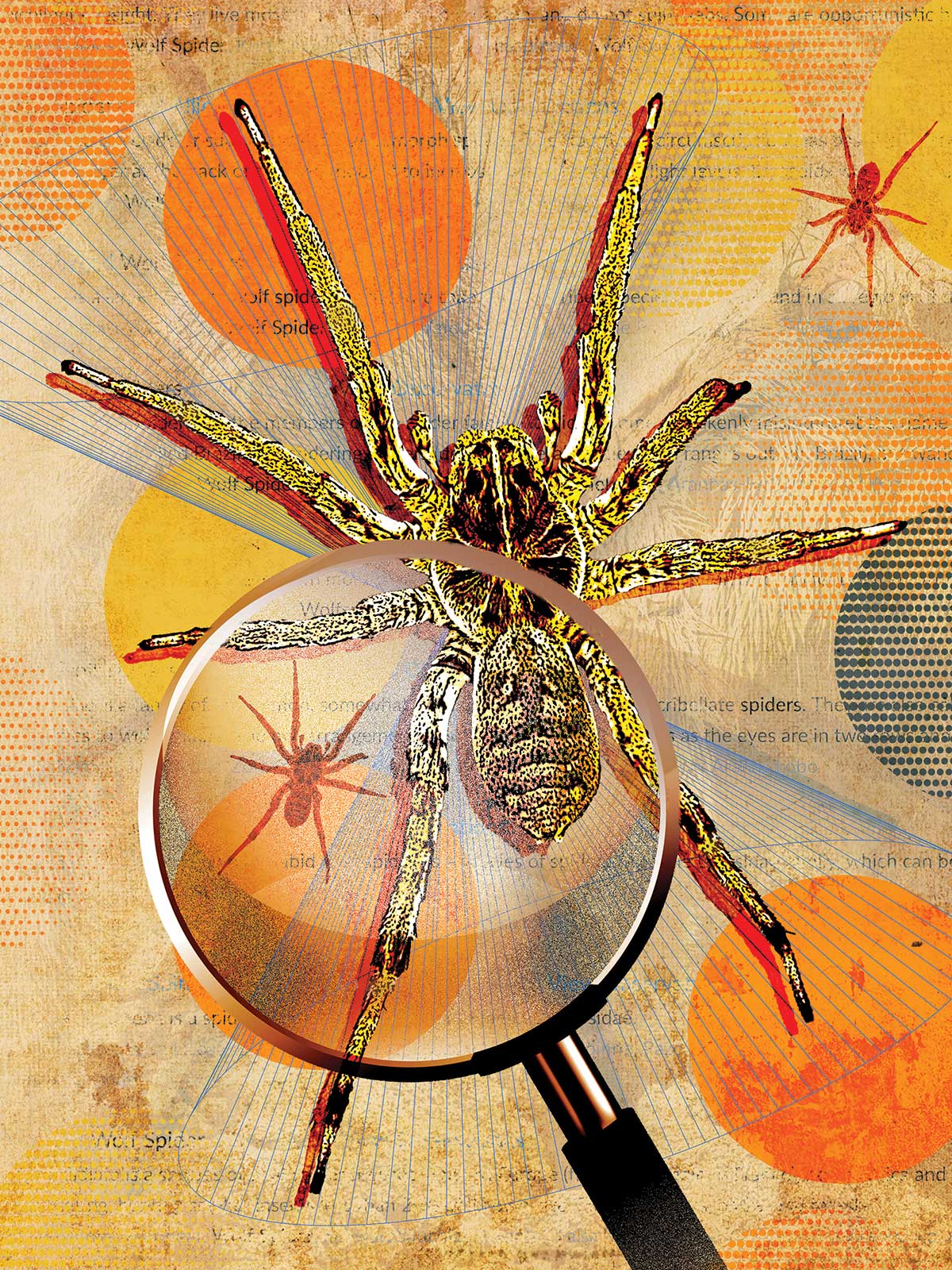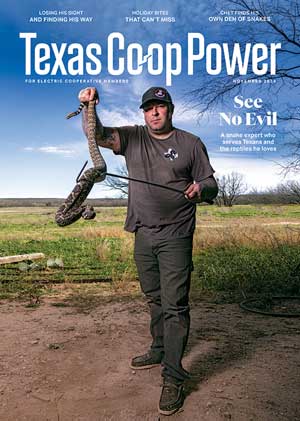For more than a century, a rather large wolf spider in Texas attracted little, if any, scientific attention. Then in 2019, Eric Neubauer—an amateur naturalist and recent transplant from Pennsylvania—began to document and photograph the fauna on his rural 12 acres south of Davilla, between Austin and Waco.
With time, he noted enough differences among some of his abundant burrowing wolf spiders that he suspected he’d discovered a new species.
Neubauer, a Bartlett Electric Cooperative member, was right. Five years later, he and a Texas biology professor have nearly finished the lengthy process of naming an undescribed species, Hogna incognita.
For an amateur like Neubauer, that’s a major accomplishment. On his own dime, he sleuthed to solve a wildlife mystery. “I’ve always had an interest in nature,” says Neubauer, a member of the Texas Master Naturalist Program. “Out here in the middle of nowhere, there’s not much to do. So taking pictures is free entertainment. Plus it gets me outside.”
Though he holds a biology degree, Neubauer never worked in the field professionally. Instead, he taught figure skating, worked as an engineer for a manufacturing company, and wrote articles and books on railroad car history. After the sudden loss of his wife, he moved to Texas in 2018 to be near family.
At home on his piece of blackland prairie, Neubauer resumed photographing insects. To nail down identifications, he uploaded pictures to iNaturalist, a nature app that enables users to record observations of what they find, keep species lists and compile data. The global network connects online members who share information and help one another with identifications.
However, users often get stumped. In Neubauer’s case, some of his wolf spiders kept getting ID’d as Hogna antelucana, a commonly seen species (with no common name) in Texas. Upon closer examination, he began to notice that leg bands and other body markings didn’t always match among his Hogna antelucana observations. Maybe they weren’t the same species, he proposed. A few iNaturalist users tentatively agreed.
Determined to find out himself, Neubauer learned all he could about wolf spiders, a harmless group of ground spiders that hunt mainly at night and pounce on their prey. Their dark mottled colors help them blend into their surroundings. Some dig burrows while others hide under rocks or nowhere at all.
From miniscule spiderlings to more than 2-inch-long adults, Neubauer improved his photography skills so he could take sharp pictures in all their life phases. To broaden his research, he traveled across Texas to photograph wolf spiders.
“By the end of 2021, I was sure I had two separate species,” Neubauer says. He concluded that his new species had been confused with Hogna antelucana since 1904, when Thomas Montgomery first described the species from specimens collected in Austin. Neubauer hopes to dub his overlooked species Hogna incognita.
“I’m not in favor of naming species after people,” he explains. “I wanted a species name that sounded good and wasn’t used elsewhere. I also thought ‘incognita’ was appropriate for a wolf spider that had been confused with another spider for 120 years.”
Meanwhile, Russell Pfau, a professor in the biological sciences department at Tarleton State University, noticed Neubauer’s observations on iNaturalist. He also reviewed Neubauer’s research posted online.
“After looking at spider observations from my property, I could see the differences that Eric was pointing out,” Pfau says. “So he and I began to correspond. We’ve also met several times. Eric’s knowledgeable about spiders and scientific terminology. He’s very sharp-eyed too.”
In 2023, Pfau offered to help Neubauer prepare a scientific paper for publication—a major step in the complicated process of naming a new species.
For his part, the professor conducted genetic testing on both species. Though they look similar, the DNA results confirmed that the two spiders are different. In vials on his desk, Pfau reared spiderlings from the two species and documented their developmental stages, which also differ.
Sometime next year, the pair hope to have their paper published in a scientific journal. If other biologists agree with their findings, then Hogna incognita will be officially recognized as a new wolf spider species.
While he waits, Neubauer continues his research. “Right now I’m taking photos of other species in Milam and Burleson counties,” he says. “That’s enough to keep me busy for a while.”



